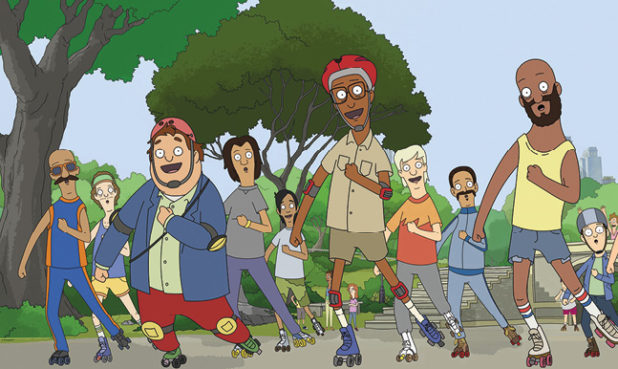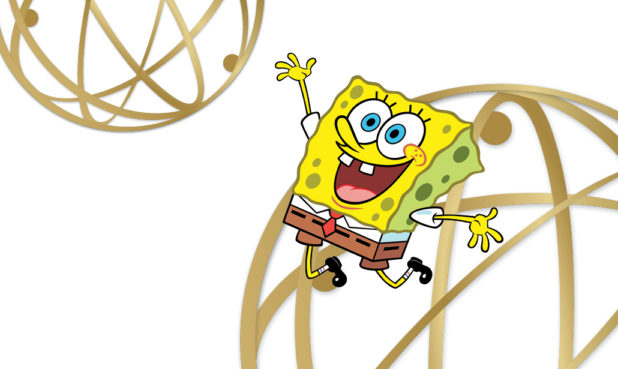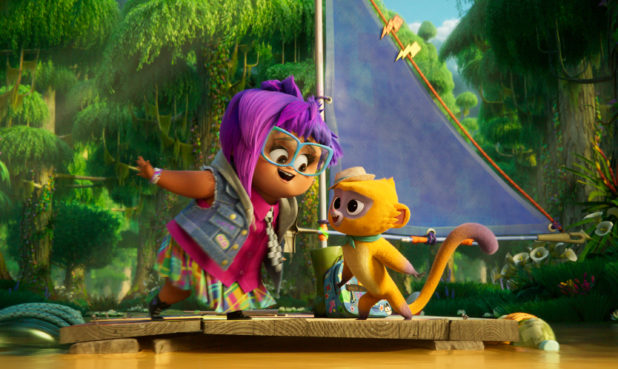Back in February, when we learned that Scooby-Doo’s Velma Dinkley would be getting her own adult animated series, we were intrigued. Not just by the thought of cartoon history’s most bookish brain setting off on her own decisively more adult course, or by the fact that she’d be voiced by the multi-talented Mindy Kaling (who is also executive producing), but also by HBO Max’s simultaneous announcement of a reboot of MTV’s Clone High, a renewal of Close Enough, and an order for the original Fired on Mars, executive produced by SNL’s Pete Davidson. Not to mention four new Max Original adult animated series in development.
Jump ahead a few months. HBO Max and Adult Swim merged their adult animation development teams just weeks after Disney Television Studios launched 20th Television Animation, a separate unit to maintain the studio’s legacy shows (Family Guy, American Dad, Bob’s Burgers, The Simpson’s, etc.), as well as develop new adult animation series. Born out of 21st Century Fox (the originator of most of the legacy shows), which was gobbled up by Disney in 2019, it already had 11 adult animation series in production for numerous streaming services on the day it launched, including Solar Opposites (Hulu) and Central Park (Apple TV+).
“Adult animation has entered a period of rapid growth and genre diversification,” according to John Evershed’s March 2021 Adult Animation White Paper. Evershed’s company, High Concentrate LLC, specializes in the research, packaging, development, and sale of adult animated TV series and movies, and he reports that new adult animated series on order are up “a whopping 100% from a year ago.”
As we watched this trend grow at exponential speeds, we wanted to know more about the factors driving it. We reached out to some industry insiders, starting with Billy Wee, SVP of Comedy and Animation Originals at Velma’s own HBO Max.
“I think artists and fans alike are driving this latest boom in adult animation,” Wee says. “Artists by taking full advantage of the creative freedom that streaming affords, and fans by supporting these shows and creators, driving viewership and evangelizing for their favorite shows.”
He explains that this offers an opportunity to showcase a vast range of styles and broaden the creative spectrum from “established showrunners to young, up-and-coming creators.”
Mike Moon, Head of Adult Animation at Netflix, also notes the influence of streaming: “[It] has opened up so many opportunities … The industry has never seen so much innovation in such a short time. We all need an escape, and animation provides it like nothing else.”
That said, Moon also feels the rapid growth is fueled by the success of established adult animated series, like Netflix’s own Big Mouth, whose popularity paved the way for the creation of a spin-off, Human Resources. The goal of every such show, of course, is to become the next South Park or The Simpsons—as iconic and anchored in TV lore as All in the Family and Friends.
“Many of the longest-running TV series of all time have been animated,” Moon notes. “The fact that these shows travel so well and are timeless definitely has fueled everyone’s desire to produce in this space.”
That desire can be seen in productions and purchases traced to nearly every studio and streaming service. At just the tip of the iceberg, Comedy Central is reviving Beavis and Butt-Head and introducing the Daria spin-off, Jodie. HBO Max paid approximately $500 million for exclusive streaming rights to South Park, while Hulu purchased the exclusive rights for streaming Family Guy and Bob’s Burgers.
While studio enthusiasm is essential for the growth of this genre, none of it is possible without the artists who are imagining and crafting all of these series. Animator Drew Newman, who is currently working on both the Bob’s Burgers TV show and movie, feels that these artists are an entirely new and unique generation fueled by some very specific influences from their youth. For example, series like Batman: The Animated Series which broke new ground when it hit small screens in 1992.
“As a kid, I thought it was an adult cartoon that I wasn’t supposed to be watching,” Newman says, “I thought I was sneaking a watch because [it] had complex storytelling, adult themes of emotions, and conflicts and ethical dilemmas that I had not seen in a cartoon. … Batman was my introduction to a character feeling guilt or being faced with a situation that they’re not sure what the right answer is, and there’s so much loss and grief in those episodes. I think that and some other shows for kids growing up in the ‘90s showed that cartoons can be more than just a cat chasing a mouse or a coyote chasing a roadrunner. We kind of carried those with us into college, and some of us went to art college, and we started pitching shows that had adult themes, as well. It’s one of the early seeds, I would say.”
Ben Jones, the Creative Director of Bento Box Entertainment, notes how the generation described by Newman has contributed to a kind of watershed moment in animation. “It seems every day for the past decade I’ve been excitedly playing to catch-up to the level of amazing talent on every animated show across the world. And I think the ‘mainstream adult animation genre’ … is just now catching up to this epic tidal wave of creators, artists, and technology. Ten years ago, I felt like the future was a clear vision that the world of animators knew could come true: non-traditional creators, new technology, new formats.” A vision, he observes, that has brought awareness and distribution into “sync with the crazy dreams animation creates.”
As for the affect the pandemic has had on the growth of adult animation series, everyone agrees it’s had some influence, from the shutdown of the production of so many live-action shows to the fact that much of the animation industry continued working despite everyone being at home.
“It was the only genre that was able to, for the large part, stay on schedule and keep the impacts of the shutdown to a minimum,” says Jones. “Aside from the several days it took to transition our staff to working remotely full-time, we kept moving forward. That said, the pandemic pressurized and turbo-charged what we do. .. It’s changed everything, yet the core process for creation is still the same, and what we love and laugh at is timeless.”
“Animation is such a pliable medium,” Moon adds, “and we have just scratched the surface of the types of stories that can be told. The next several years will bring a ton of innovation in storytelling, format, and a much-needed diversity of creators.”
This diversity is main thing Newman notes most when considering how he’s watched adult animation change over the 14 years he’s been a part of it. “I’m seeing more representation. It’s not just middle-aged white guys running the show … We get a variety of stories and points of view.”
Newman also thinks animation is going to get weirder. “Those of us working from home, we’ve been locked inside. We all have cabin fever. We’re getting weirder so the stuff we’re going to make is getting weirder.”
Twenty years ago, this might have been a problem. Today, not so much, as Jones observes that the suits and artists are becoming more aligned when it comes to exploring new frontiers of content. “[We now have] brave, smart, and cool executives from all walks of life and backgrounds who are intent on pushing the entire space forward in creative and meaningful ways.”
As one who straddles the world between executives and artists, Jones has specific thoughts when asked where he sees the genre going: “For an animator reading this, I think line weight and line texture is going to evolve. For writers reading this, I think new voices will challenge the status quo. For audiences and humans, I think it’s the most exciting answer, which is we don’t know. But we have the power to envision and manifest amazing things if we keep telling the stories we want to tell and let our imaginations take viewers (and ourselves) on never-before seen journeys.”



